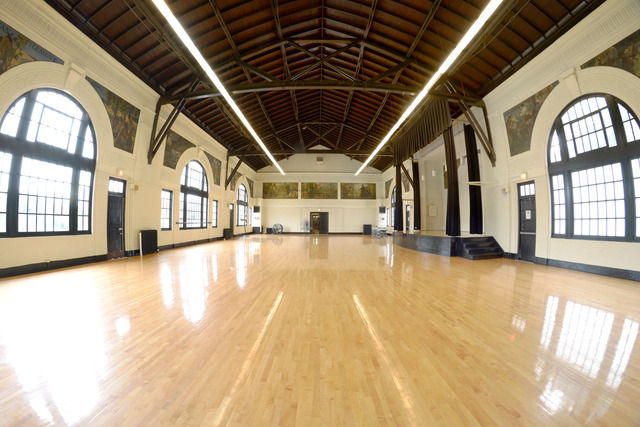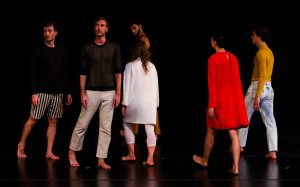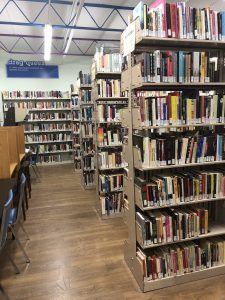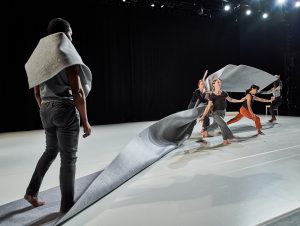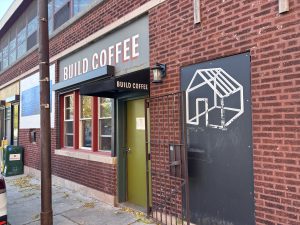Urbs in Horto: the official motto of the city of Chicago. This translates from Latin to “City in a Garden,” yet the construction of public green spaces around Chicago has a fraught, often troubled history. From its origins in the late nineteenth century, exhuming as corpses from plots on the North Side, the Chicago Park District emerged as a consolidated entity in 1934 and today proudly announces its status as “the largest municipal park manager in the nation.”
As the Chicago Park District expanded, so did the city’s need for comprehensive, accessible arts programming. Though these needs existed prior to such expansion, the process of opening new public spaces threw them into a sharper relief. Landscape architects, like the Olmsted brothers who were commissioned to provide some recreational relief for the city’s overcrowded conditions, envisioned a new set of parks providing social and cultural services in addition to open green space. Parks might not merely be designated areas for fitness and recreation, they could also become an important facet of the Chicago’s cultural landscape. As it was carried through to the present day, this notion led to one partnership which is unique to the city: the permanent residency of dance and theater companies in park field houses.
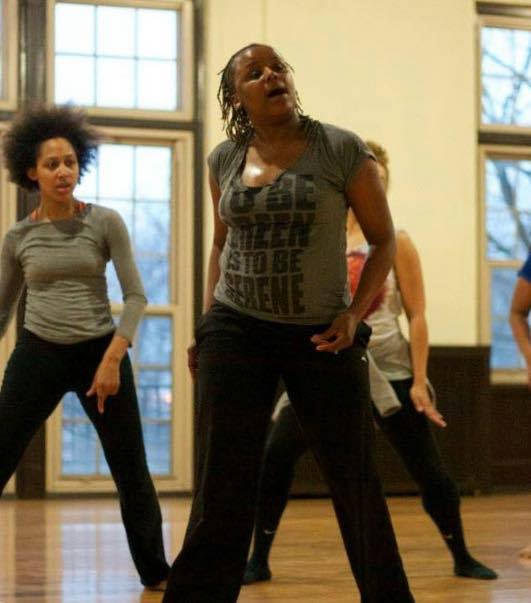
The Arts Partners in Residence program has connected over thirty such companies with rehearsal and performance spaces in various parks across the city. Some parks, like Pulaski Park and the South Shore Cultural Center, are home to multiple companies, while some troupes maintain residencies across more than one park. Companies have sustained residencies lasting anywhere from one year to upwards of twenty. While funding is shared throughout city parks, arrangements for residency are made at the local level between companies and Park District staff. In addition to providing rehearsal spaces and performance programming, these arrangements also pertain to dance education and classes for the wider community served by the Park District. Time and financial resources can be dedicated to maintaining the company’s relationship to their community and improving the quality of their work, rather than ensuring that studio rentals are taken care of.
In short, a Park District residency usually means that companies can provide better working conditions for their performers: paying them a living wage, providing them with a consistent space, and so on. Rather than paying dues towards maintaining a cultural hub around areas like downtown and the near North side, Arts Partners in Residence occupy field house and auditorium spaces throughout the city, many of them with considerable historical and/or architectural significance in their own right. This exchange is thus mutually beneficial — companies enjoy the stability and artistic freedom afforded by having a permanent, even beautiful space to call “home,” while residents who are interested in dance and performance enjoy consistent access to both open classes and performances.

On the other hand, such exchange isn’t always perfectly calibrated. Many of the buildings which might be used by dance and performance companies aren’t totally suited to the needs of such an organization. Some of the field houses have been standing since the early twentieth century and need significant repairs, which can be difficult for companies to manage on top of other administrative necessities. In spite of the relief provided by free access to space, Park District funding is consistently inadequate for the work companies would like to pursue, particularly those in underserved communities. This sentiment was echoed by several of the company representatives I spoke to. Simply put, the donations provided by city and state grants, donors, and foundations are insufficient when split across the entire Park District as the process currently stands. Furthermore, because of the amount of programming which is left to the the staff of each individual park, park supervisors are often dealing with heavy workloads that can make it difficult to respond to the needs of a resident organization. And lastly, and perhaps more importantly, a resident company is no longer a totally private entity, entailing a different sort of responsiveness to (and responsibility towards) the Park District and its surrounding community. Their dancing, now, is made public.
I had the opportunity to interview representatives from three different dance companies currently serving as Arts Partners in Residence: Vershawn Sanders-Ward of Red Clay Dance (Fuller Park), Christina Gonzales-Gillett of The Seldoms (Pulaski Park), and Julia Rae Antonick of Khecari (Indian Boundary & Revere Parks). What follows is an account of the ups and downs of the Park District’s cultural programming and the dance companies residing in it, as well as speculations on what we might be able to expect in their futures.
JULIA ANTONICK, Khecari (Indian Boundary Park)
“We began our residency at Indian Boundary and Revere Parks in 2012 and have been offering performance, open rehearsals, and free workshops to the public since then. We are really happy with our residency. It fits well with us, and we don’t have any major problems. We love reporting to the supervisors at the parks mainly (Phil and Greg). They in turn report back to the bigger institution of the Park District so we don’t have to worry about those details, and this works great.
However, if I were to list some things that could change they would be that a few major donors, foundations or city and state granting organizations could support cultural programming at the Parks more highly so that they could hire more staff to help administrate and market the programming, upgrade the facilities, and present the produced work of the artists in residence officially by providing a commission or giving the space in-kind instead of taking a cut of the ticket sales at shows.
It is a big deal to have free rehearsal space. It opens up your brain to more possibilities by not having a price on time and space. Having partners in this highly unstable process of making art is priceless … By having free rehearsal space, we are able to pay artists a living hourly wage of $15/hr. If we didn’t have free space, these funds would go into studio rental. I believe this makes a huge difference in the lives of all the artists involved with Khecari.”
CHRISTINA GONZALEZ-GILLET, The Seldoms (Pulaski Park)
“Our partnership with the Chicago Park District began because we instigated a search knowing that other dance companies had partnerships that allowed them rehearsal space in exchange for classes or other community programs led by the company. The Chicago Moving Company has been an Arts Partner for 20+ years at Hamlin Park, so we had a few models as examples. For the company, practically speaking, we needed rehearsal space and a steady place to call “home.” In the past, we rented space all over the city, and that gets tricky in terms of scheduling dancers around a space schedule where you have no control, plus it can be expensive. It’s an unstable situation when you have to constantly change venues or rehearsal time both in terms of budget planning and contracting dancers for long periods of time.
In having this kind of stability there is a certain level of administrative work that has been taken off our plate. We don’t have to find space, rent space, rearrange schedules. We have a regular, relatively unchanging schedule that allows dancers to organize their other jobs in a way where they can devote their time to The Seldoms and allows the company to retain dancers for longer periods which of course enriches the artistic output. The regularity allows us to be steady with casting. Additionally, we know how much of our budget to allocate to the rehearsal process. We pay teachers and artists instead of studios to rent space. We can nurture teaching artists and contract dancers in a manner that is sustainable and has longevity. In a direct way it has led to the growth of the company in a manner where we can provide better opportunities for teachers and performers.”
VERSHAWN SANDERS WARD, Red Clay Dance Company (Fuller Park)
“Being an Arts Partner in Residence has given us a home base, and I think it’s added to our identity as an organization that works in the South Side, that is based on the South Side, and that serves the South Side. So we’re very much committed to that. I think this partnership has allowed for people to be able to find us and know about our commitment to the community just by the fact that we’re here. You know, people might take that for granted, but I’m like, ‘no, that actually is valuable.’ We are part of the ecosystem of Fuller Park and Bronzeville and the surrounding neighborhoods. I hope that it expands people’s understanding that professional art can be and should be a part of every community. Not just at the epicenter of the city, not just downtown; it should be everywhere. Everyone should have access to artists that are working in this profession, if not only for people to see that it is something that people still do as a living and want to do as a living.
The things that that have been a challenge for us … I think we have really great ideas programmatically but then it’s always a conversation about space, and what’s available and what’s not available. Because the park still has their own brand and identity that they offer through their classes, [the challenge is] trying to co-exist but still have the community realize that you are an independent entity, and you have a certain way of doing things that is in partnership with the park but it’s not the park. I know that, specifically in the communities we work with, people have different feelings about the Park District and what can or should happen at the Park.
We just had a really great master class last night with three different instructors, they came and taught a two-hour class. It was great. The auditorium is a very beautiful space. You know, the big windows … Really, I think there’s just a lot of park spaces that are kind of underutilized and the residency is a good reason to use them more. There definitely needs to be more on the South Side and there’s the potential. There’s so many—there’s so many— buildings that have these amazing auditorium spaces and they just need some work. My hope is that as more arts organizations exist inside these buildings, there’s a re-investment in the buildings to keep them running and fully functional in all of the neighborhoods — in spreading the resources out equally, not just in certain park spaces. Not needing to build anything new, just re-investing in what’s here.”
Featured Image: A fish-eye lens image of the Sherman Park Auditorium, located in the New City neighborhood of Chicago. The auditorium is a very large, wood-floored studio; with a smaller elevated stage off to the right surrounded by black curtains. Other architectural elements of note include its arched windows, exposed rafters, and Depression-era murals. Photo by Emanuel Love.
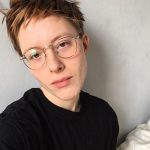 Maddie Kodat is an performance artist and writer based in Chicago, IL. They have performed at Comfort Station, Ballroom Projects, Fat City, Hamlin Park Theater, and Lou Conte Dance Studio, and published work with Glass Press of the Future and Meekling Press. Maddie received a BFA in Studio Art and a BA in Visual/Critical Studies from the School of the Art Institute of Chicago in 2017, prior to which they danced as a company member with Ballet Chicago for five years.
Maddie Kodat is an performance artist and writer based in Chicago, IL. They have performed at Comfort Station, Ballroom Projects, Fat City, Hamlin Park Theater, and Lou Conte Dance Studio, and published work with Glass Press of the Future and Meekling Press. Maddie received a BFA in Studio Art and a BA in Visual/Critical Studies from the School of the Art Institute of Chicago in 2017, prior to which they danced as a company member with Ballet Chicago for five years.
